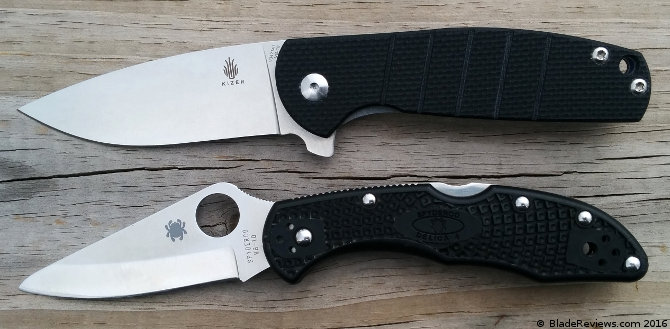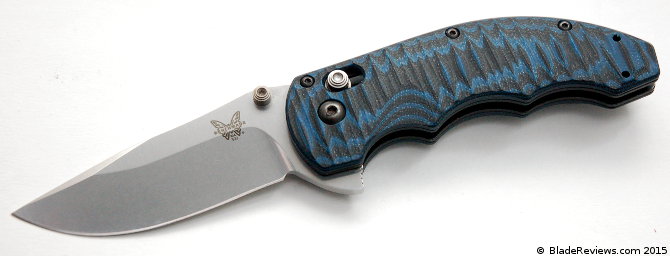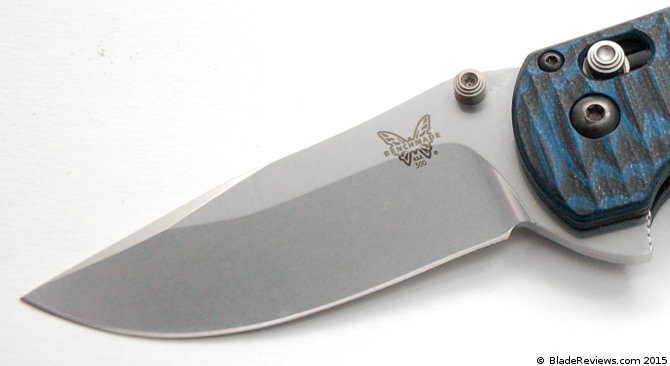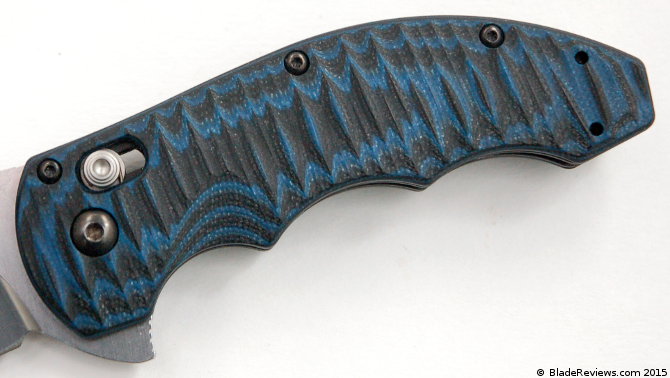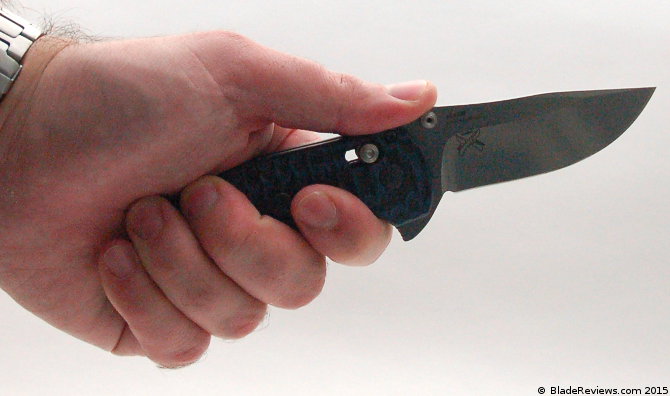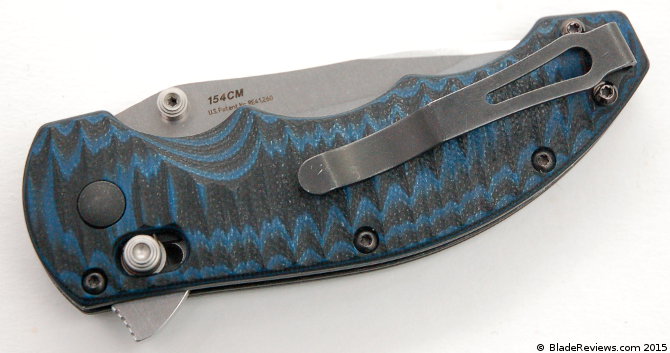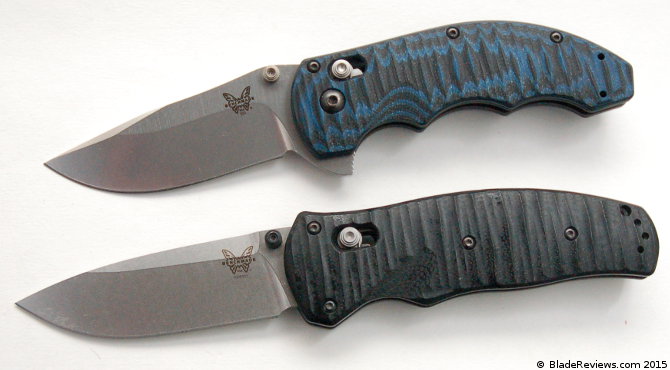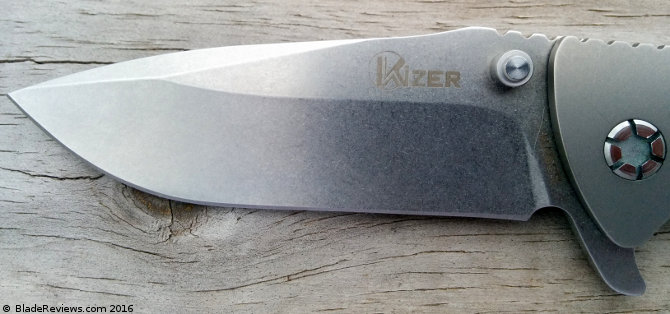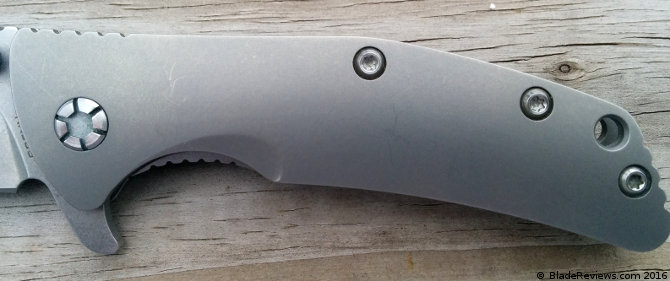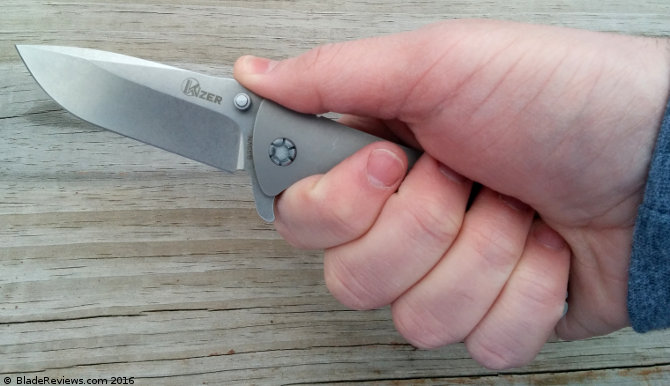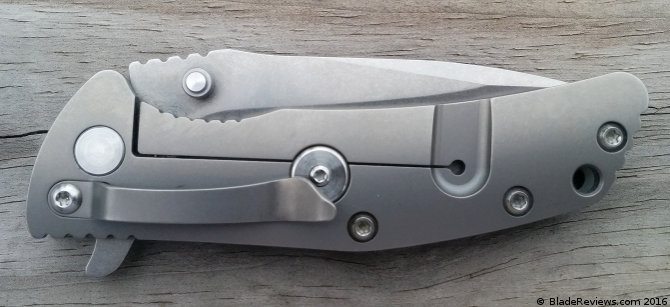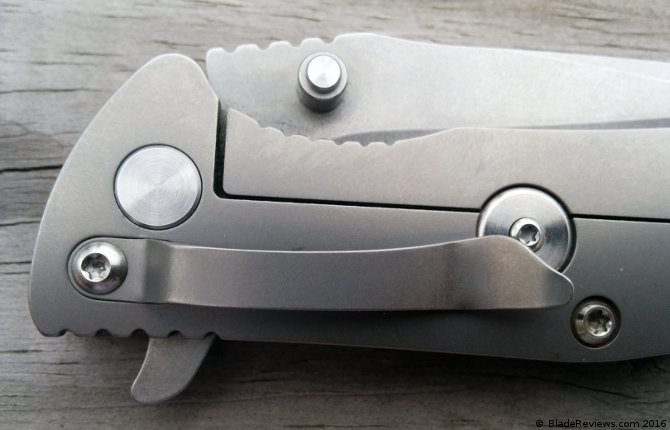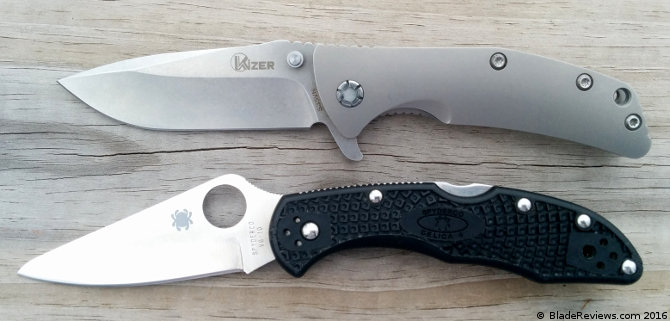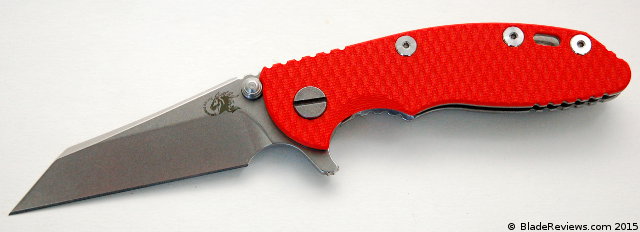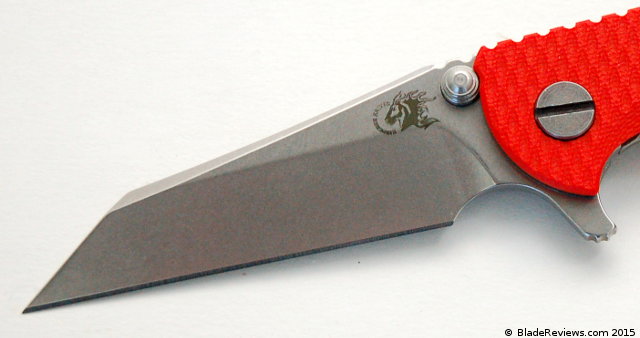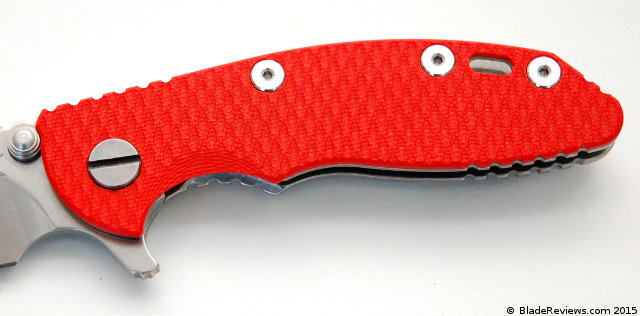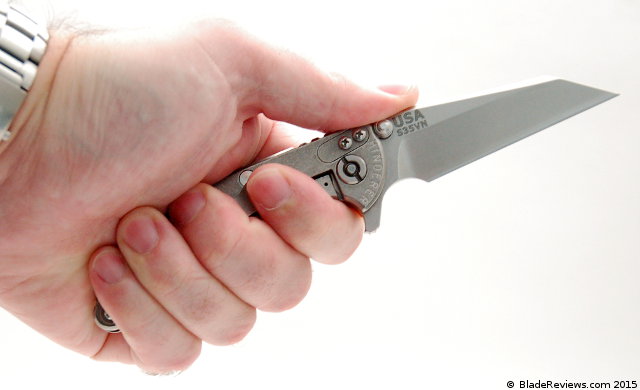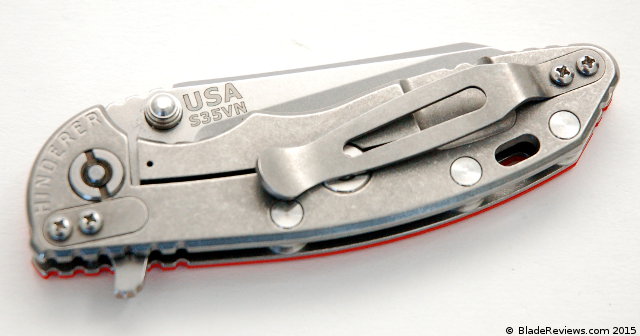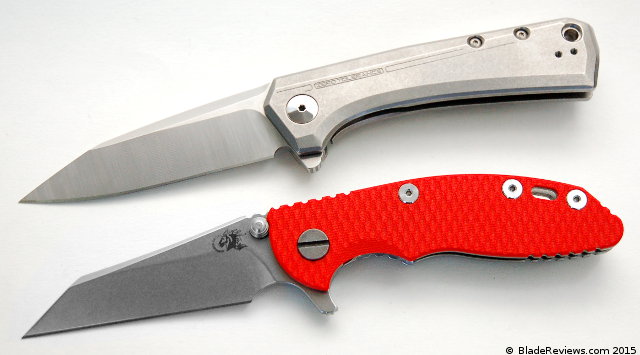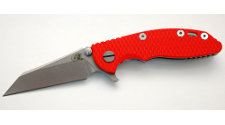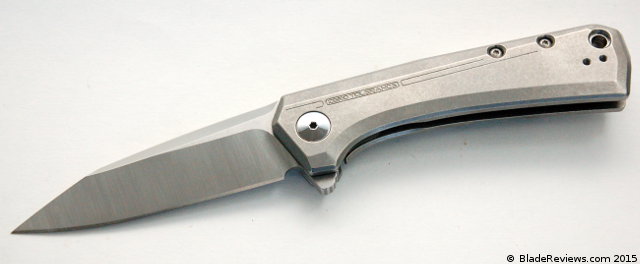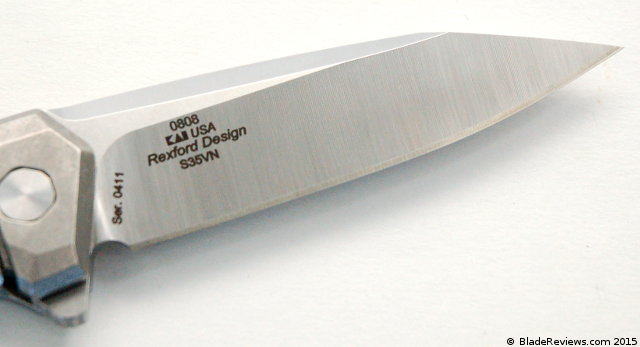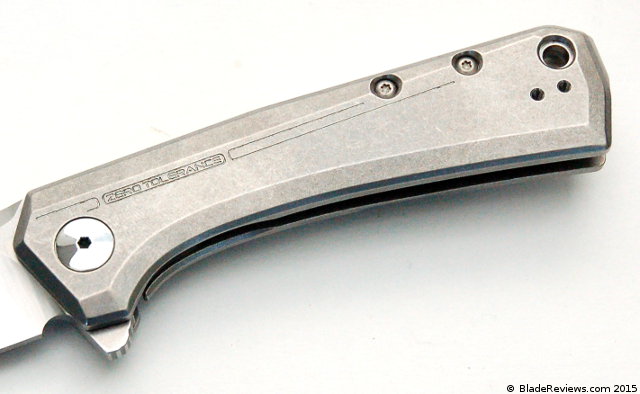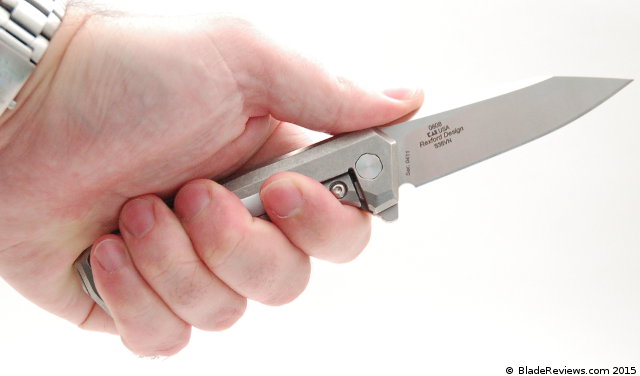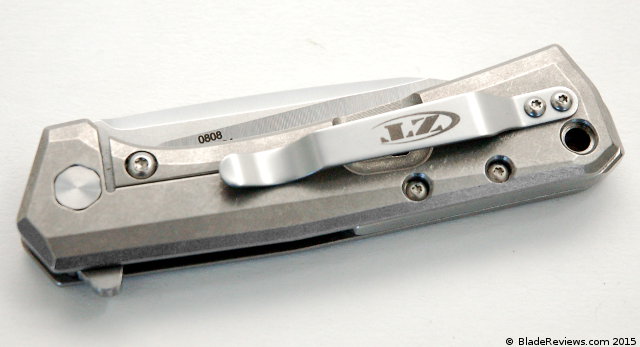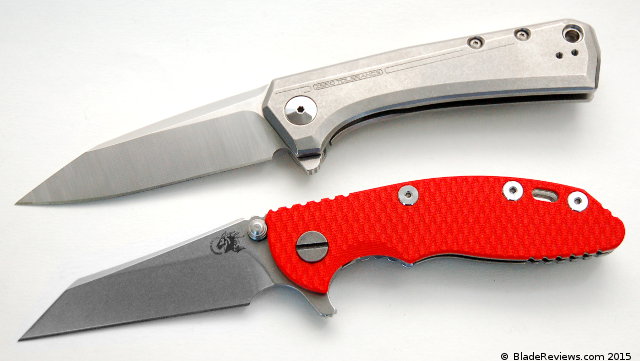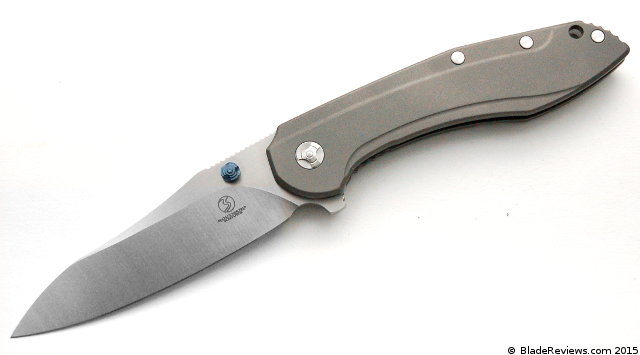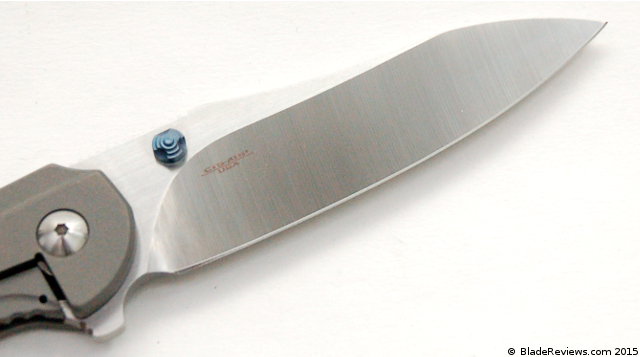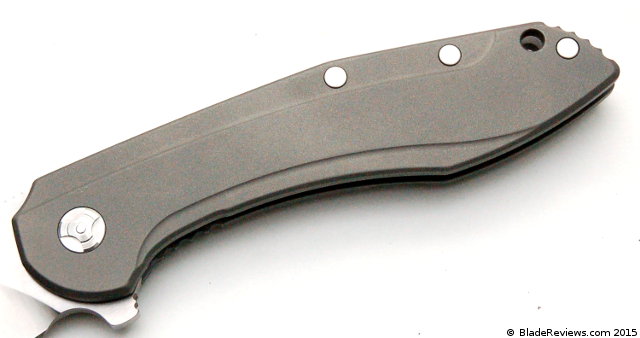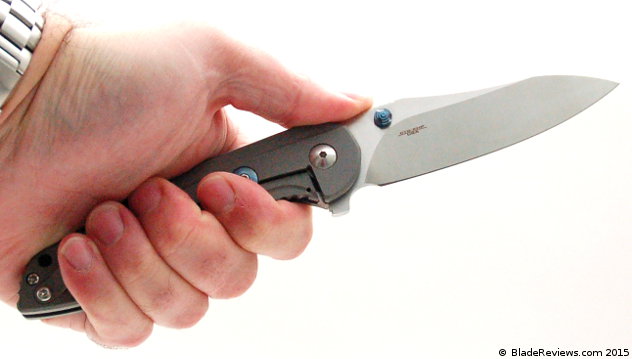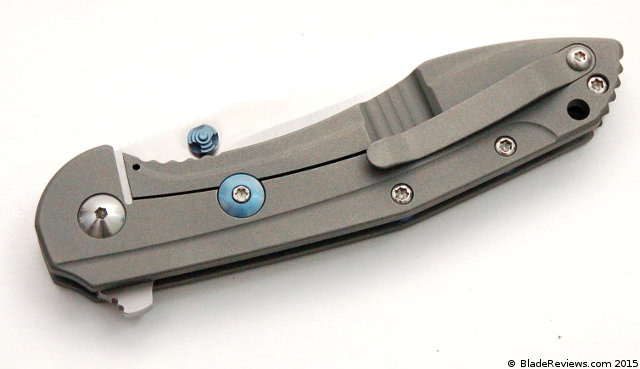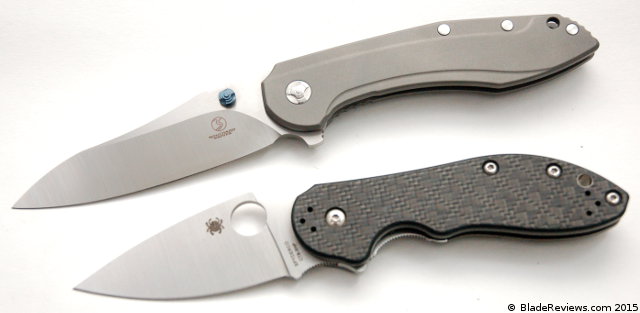Last Updated: August 2, 2019
It’s a question I (and others) have been asking a lot lately: Where is the middle?
The Budget Knife has had its day: the Tenacious, the Cryo, the Skyline, the RAT-1, the Drifter; value was the byword of the industry, and knife makers were showing some serious creativity and finesse working under the restrictive parameters of budget knife design.
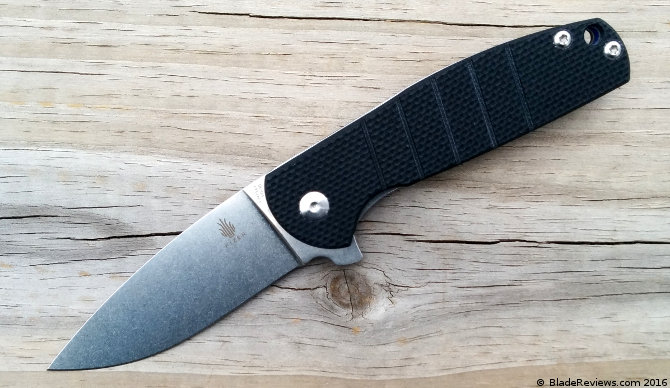
Buy the Kizer Gemini at BladeHQ
Similarly, 2015 saw the high end of the market really take off, with a stream of great $150 announced and released. The materials were different – S35VN and titanium instead of 8Cr13MoV and black polymers – but the feverish pace of invention and the way in which our expectations for quality were reset were the same.
But the middle was more or less ignored. Companies’ attention was clearly elsewhere, and this is a shame. Designs in the middle of the market (let’s say the $60-$100 range) are some of the historical best: things like the Delica and the Mini Gripitilian have good materials and great designs at an affordable price. If I were feeling polemical, I’d say that the middle of the market is the only segment in which you can shake the feeling of having to have compromised: with a budget knife, even a good one, you can’t help but think it could be improved with better steel or execution; with a high end knife, you feel like you’re paying a lot for only a little more performance.
In the middle you can get, if not the best, the more-than-adequate of both worlds. Great design, great fit and finish, great materials and steel. Less compromise, more performance. But, there just aren’t a lot of designs coming out that cater to this segment; this is why Kizer’s Vanguard series, and in particular the Vanguard Gemini, excited me so much: this is a quality design, by a famous custom maker, at a very affordable price point. As soon as I was able to, I picked one up.
But there are a lot of questions here: is it a good knife? Is it a good knife for the money? Is a good knife compared to the classics of the middle genre? Is it a better value than the premium version? The answers are complicated, and intertwine; so let’s get into it.
General Dimensions and Blade Details
The Gemini has a blade length of 3.125″, an overall length of 7/25″, weighs 3.58 ounces and is made in China. In terms of proportions, it is adequate if not distinctive. Where it really distinguishes itself from other knives like the Delica or the Mini Grip, and even from some Kizer stablemates like the 3404, is in its custom pedigree.
The Gemini is a production version of Ray Laconico’s Jasmine. Really, the Jasmine is less a specific knife than a kind of overarching design or aesthetic, a series of lines and design nuances that are translated from one Laconico knife to another. Sometimes it’s a titanium flipper, sometimes it has a liner lock and a thumbstud, but always there’s a certain aesthetic in play, and I think this aesthetic comes through most clearly, on the various custom iterations and this production riff, in the blade shape.
It’s a drop point, almost a Platonically ideal Loveless drop point except for its somewhat more elongate tip. Although this is a larger knife than the SRM 710, it too embodies an excellent, near perfect combination of edge types: you have your straight edge, your curving belly, your acute tip. You can slice, pierce, chop gracefully. The single caveat I have is that it isn’t the most robust blade, but in all reasonable use you’ll be delighted. For all around utility, this is up there with some of the best of the best.
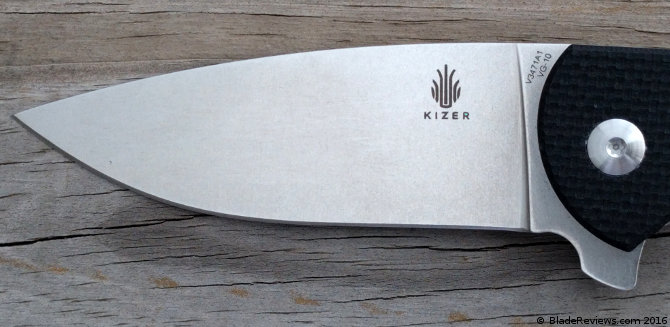
The Gemini’s blade is made from VG-10. Certainly VG-10 has fallen from grace in recent years. It’s a really weird steel. It holds an edge better than 8Cr13MoV or AUS-8, but worse than most other mid-tier steels like 154CM or N690Co – and it’s harder to sharpen well. You can get a functional edge back on VG-10 quickly, but to get it really fine you need to work on it for a bit. In short, it has an odd work-to-performance ratio, with no real standout characteristic other than its rust resistance – which, let it be said, is incredible.
The choice of steel is one of a few budget conscious decisions Kizer made when producing the Vanguard Gemini, and probably the least successful of the three. The middle segment of the market doesn’t have a representative steel like 8Cr13MoV or S35VN are for budget and high end knives. There are candidates, like 154CM or N690Co, but nothing established – and, while I don’t hate it, I don’t think that VG-10 should be in the running.
Handle, Ergonomics, and Carry
The Vanguard Gemini handle is G-10, as opposed to titanium on the premium version. And, to be frank, I prefer G-10 over titanium. Besides aesthetics, I don’t know what the argument is for titanium, now that I think about it. It isn’t warm to the touch, it isn’t lighter, it isn’t more durable in any practical sense. If the big advantage of titanium is that it allows for a framelock, that doesn’t sell it, as I find framelocks more or less strictly inferior at this point.
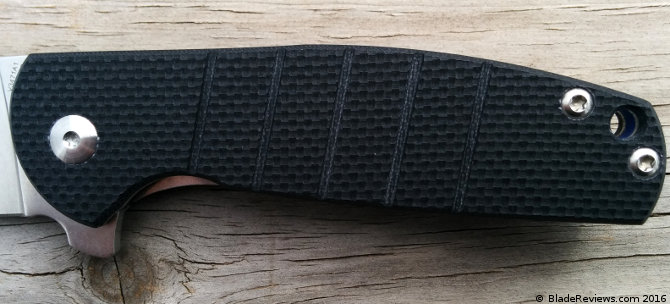
The G-10 on the Gemini is real good. It is grippy, without being outrageously aggressive. It accentuates the simple utility of the straightforward handle, giving you purchase no matter how you’re holding the blade. Compared to the Delica, which has a refined although somewhat dictatorial handle, you have a lot more freedom in terms of how you hold the Gemini.
Reviewing the 3404, the biggest issue I took with the knife besides its overall blandness was the horrible pocket clip. Kizer seems to have learned a lot about pocket clips in the time between the design of that knife and this one, because the clip on the Gemini, in terms of its lines, is very good – smaller than it looks like in pictures, but not in any way that affects carry.
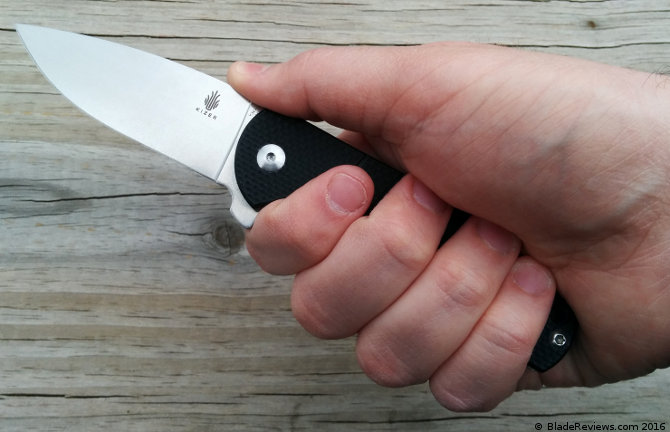
What does affect carry is the clip’s tightness. It’s not terrible, but it can be a pain to pull out of your pocket. I kind of had to pull it out diagonally, in order for my jeans to not get bunched up. It’s not ideal, but I’ll take this minor inconvenience over the atrocious clip on the 3404, every day.
Deployment and Lockup
With the Vanguard Gemini’s flipper, instead of building to a price point Kizer went all out. The flipper on the Vanguard Gemini is as good a flipper as I’ve ever used. The combination of ball-bearing pivot and silky, perfectly-tensioned detent (complete with ceramic detent ball) makes for nearly effortless deployment. Seriously, I had to go out of my way to deploy this thing incorrectly, it’s that responsive.
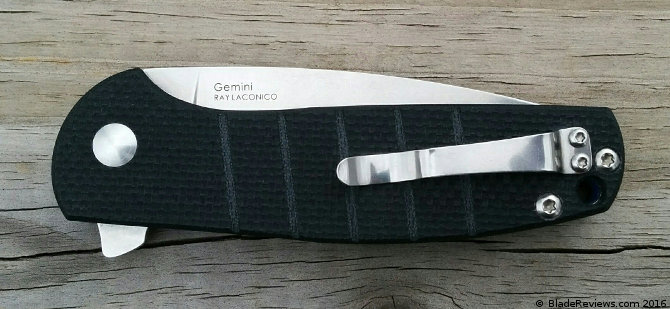
I don’t think there’s any practical advantage to a flipper design, but like any knife collector, I am susceptible to fidget factor, and the Gemini is absolutely hypnotic and addicting to play with. It makes knives that I thought pretty fast, knives like the 3404, feel sluggish. I carried the Delica 4 again around the time I was testing the Gemini, and the laggardly lockback felt like the relic of a distant age.
Because the Vanguard Gemini has G-10 scales instead of titanium, it uses a liner lock instead of a framelock – to my mind a straight upgrade. I’ve gone on at length before about my distaste for framelocks. I suppose I’ll find one I like at some point, but until then I’ll continue to espouse the liner lock as strictly better – and here on the Vanguard Gemini we have an excellent rendition of the form.
In my experience, every knife I’ve owned has some bladeplay, or develops some over my review/testing period – even if it’s very, very little. So far on the Gemini, I’ve got nothing, and I didn’t baby this knife: a cardboard cut-off with the Delica 4 induced nothing at all. Things may change in the future but, as of now, this thing is solid.
Kizer Vanguard Gemini Review – Final Thoughts
There are three different ways to look at the Gemini. First as the realization of the Kizer Promise. They were making good knives before the Gemini, but nothing that struck me as really top-tier, nothing that really stood out amidst the competition. But the clean, ineffable lines of the Laconico custom have been given a characterful production life by Kizer. If you had any lingering doubts about their legitimacy as a manufacturer, the Gemini will put them to rest.
Second, we can compare the Vanguard Gemini to its higher-end iteration. I don’t think that it’s a question of one being strictly better than the other. I prefer G-10 to titanium and liner locks to framelocks, but S35VN is a better steel. The way I see it, there are a lot of other titanium framelock flippers with S35VN steel in the world, but there’s nothing that looks or flips like the $80 Vanguard Gemini.
Third, we can look at the Vanguard Gemini as a knife in the depopulated middle price bracket. What is its competition? The old standbys, mostly: the Delica 4, the standard Mini Grip. And against these knives I’d say the Gemini falls in the middle: I think all three are excellent designs and great users. It’s largely a matter of personal preference, but the Gemini, with its luxe flipping action and top-tier finish, feels a little nicer than either.
Regardless of where it falls in the overall middle price bracket hierarchy, the Vanguard Gemini is exciting precisely because it brings something new to this much-neglected segment of the market. It routinely sold out online. Maybe it will lead the charge of a new mid-priced knife renaissance? Be a vanguard, of sorts, if you will?
- 3" stonewash finish Bohler N690 stainless blade
- Green textured G10 handle
- 4.13" closed
- Extended tang
- Lanyard hole
I recommend purchasing the Kizer Vanguard Gemini from BladeHQ or Amazon. Please consider that purchasing anything through any of the links on this website helps support BladeReviews.com, and keeps the site going. As always, any and all support is greatly appreciated. Thank you very much.
